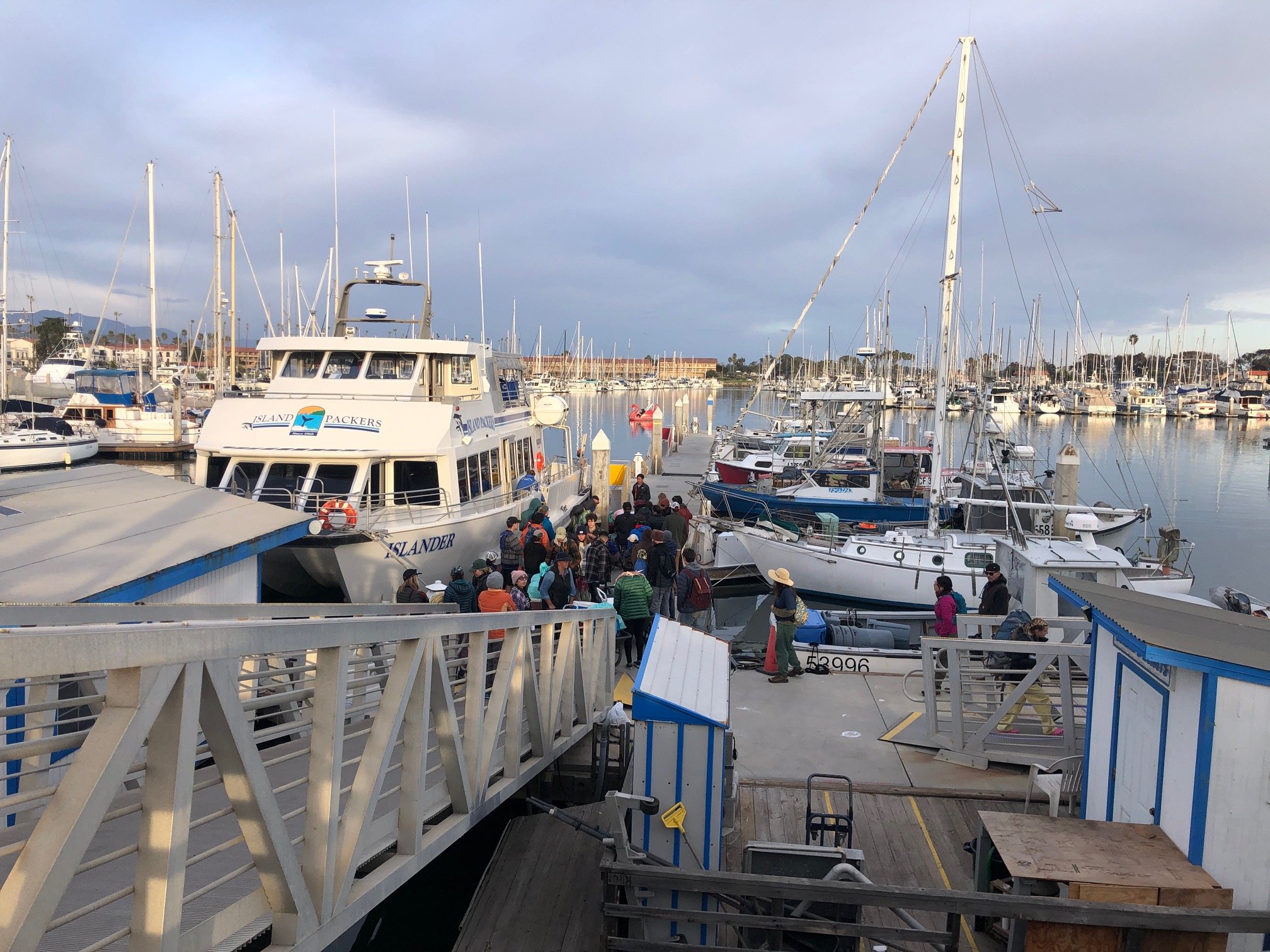
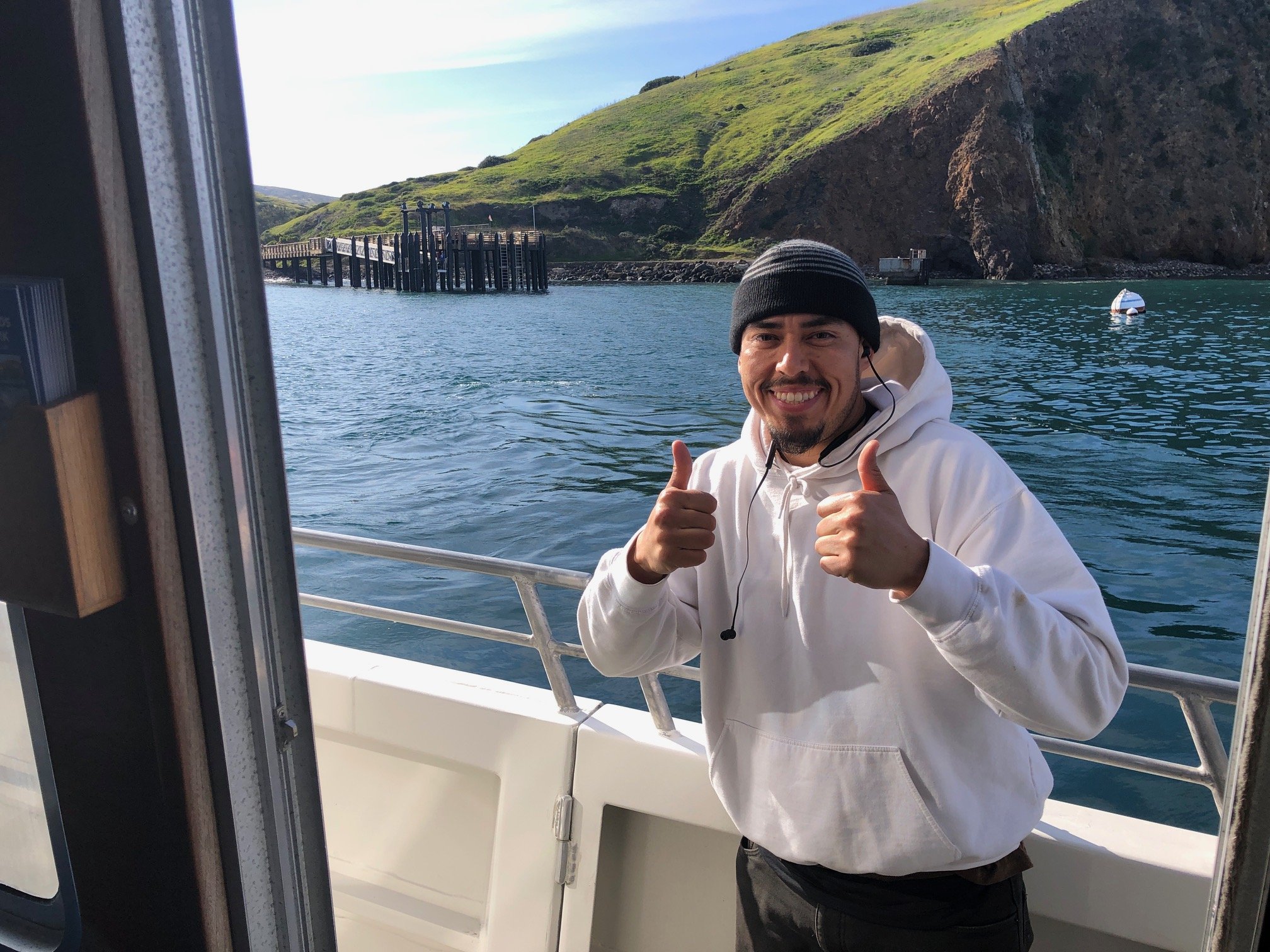
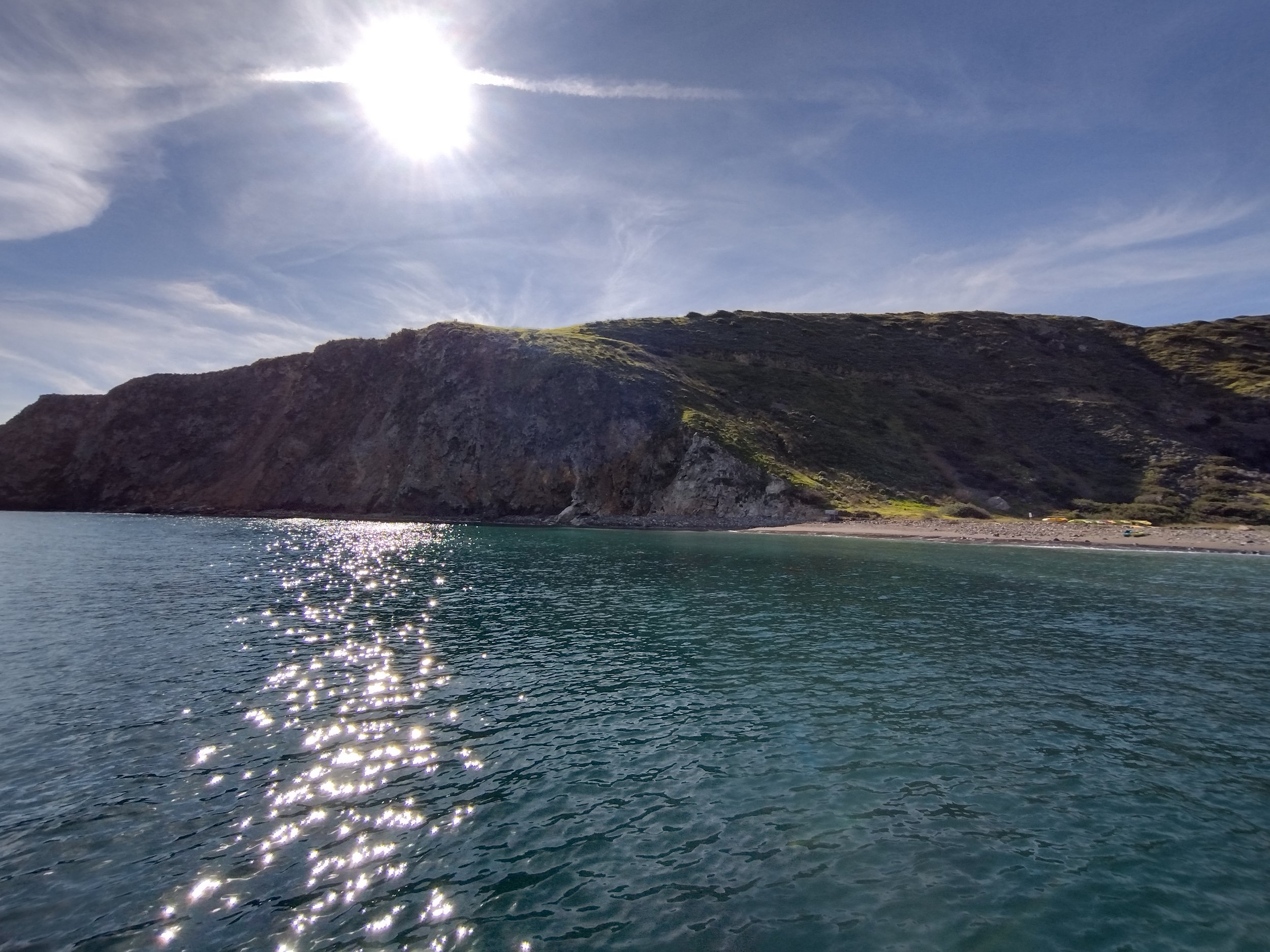
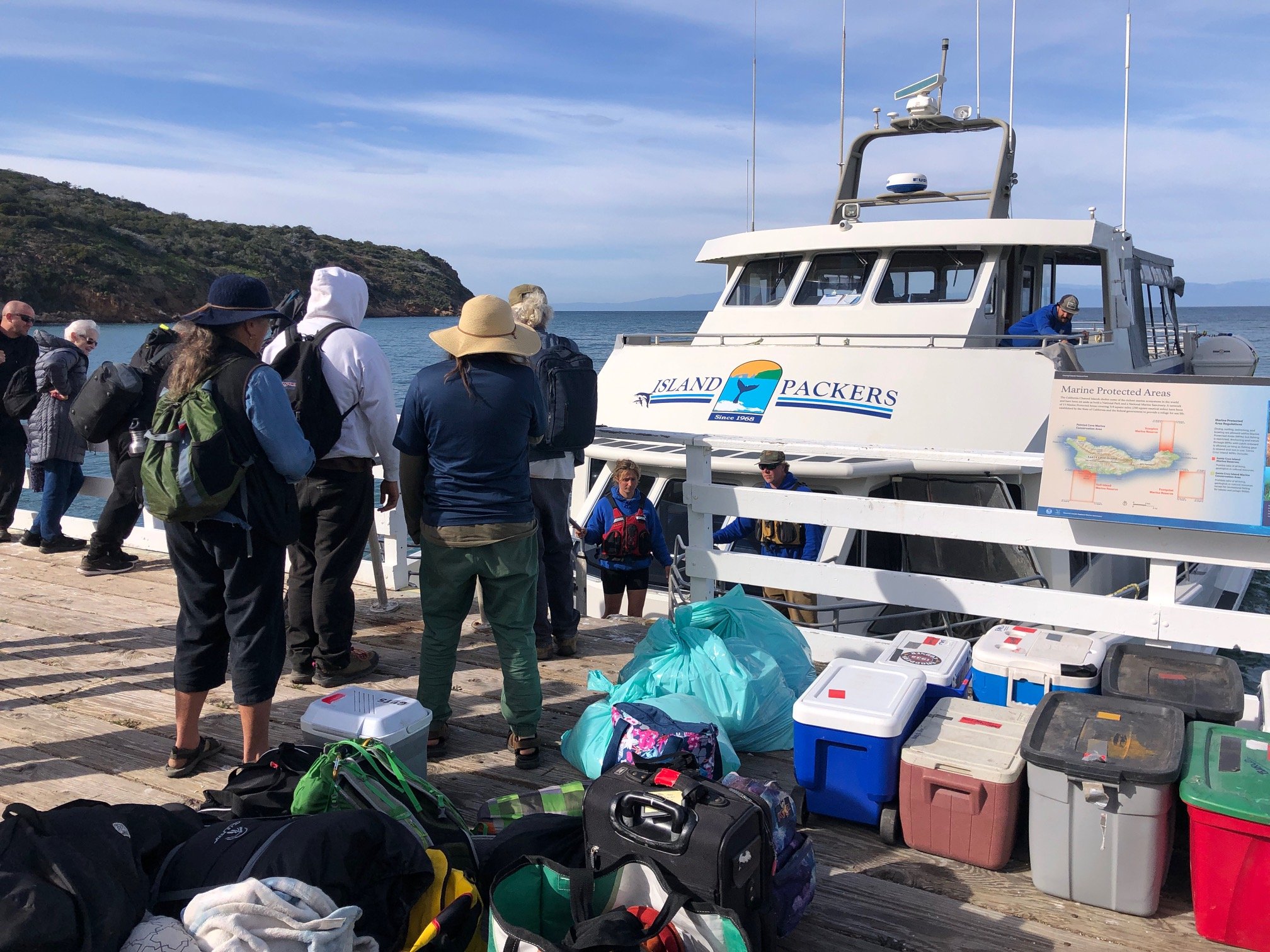
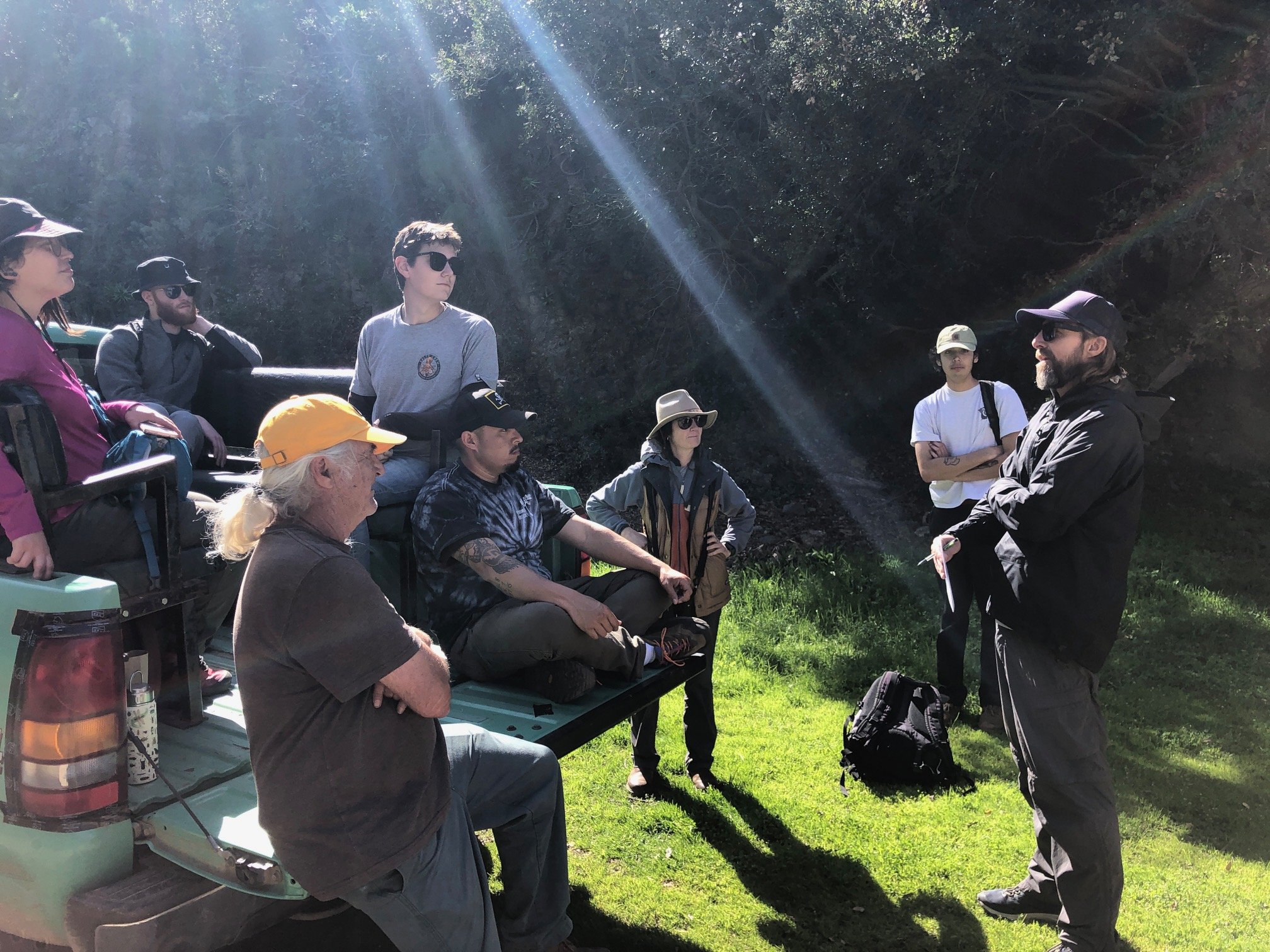

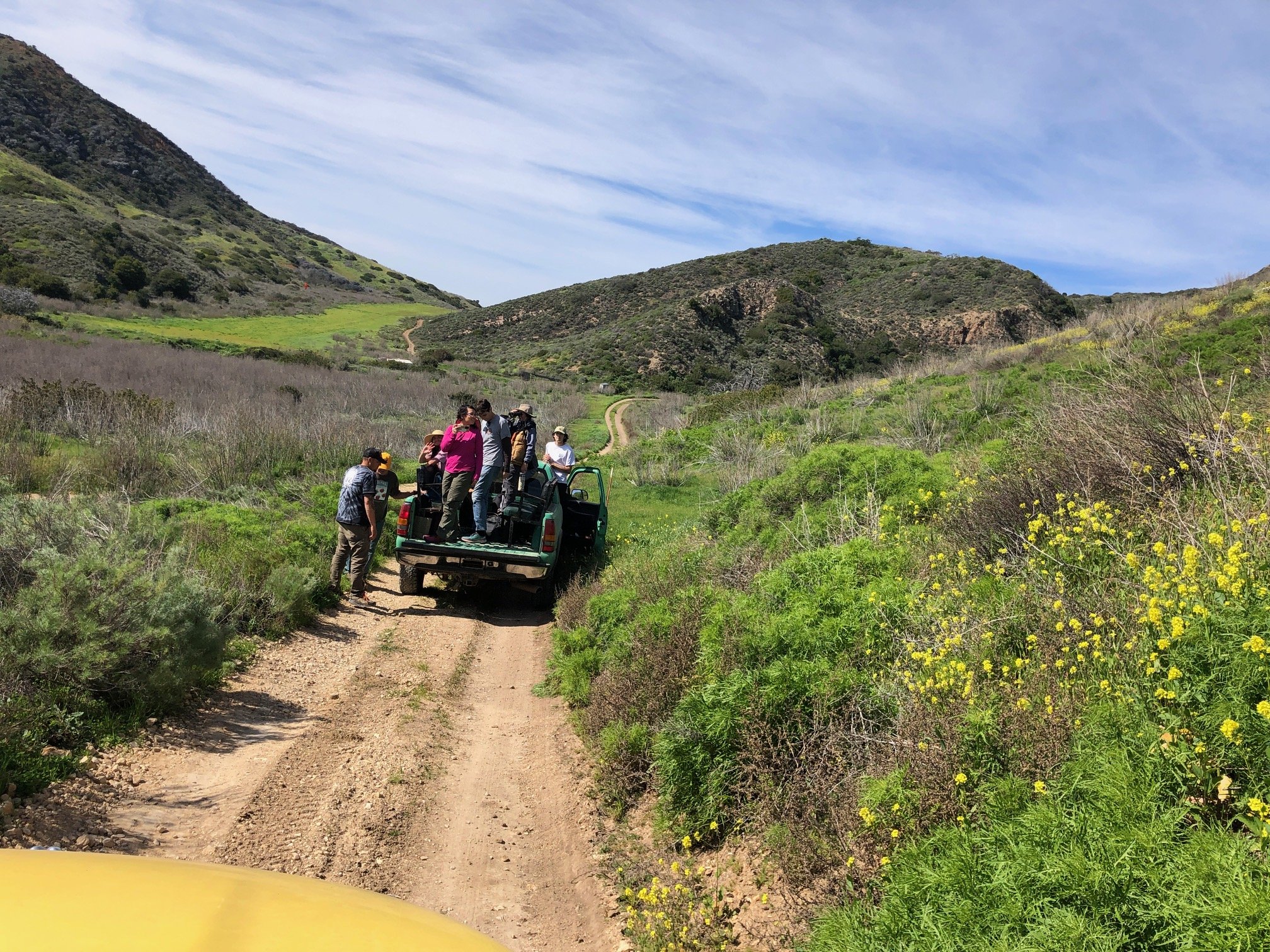
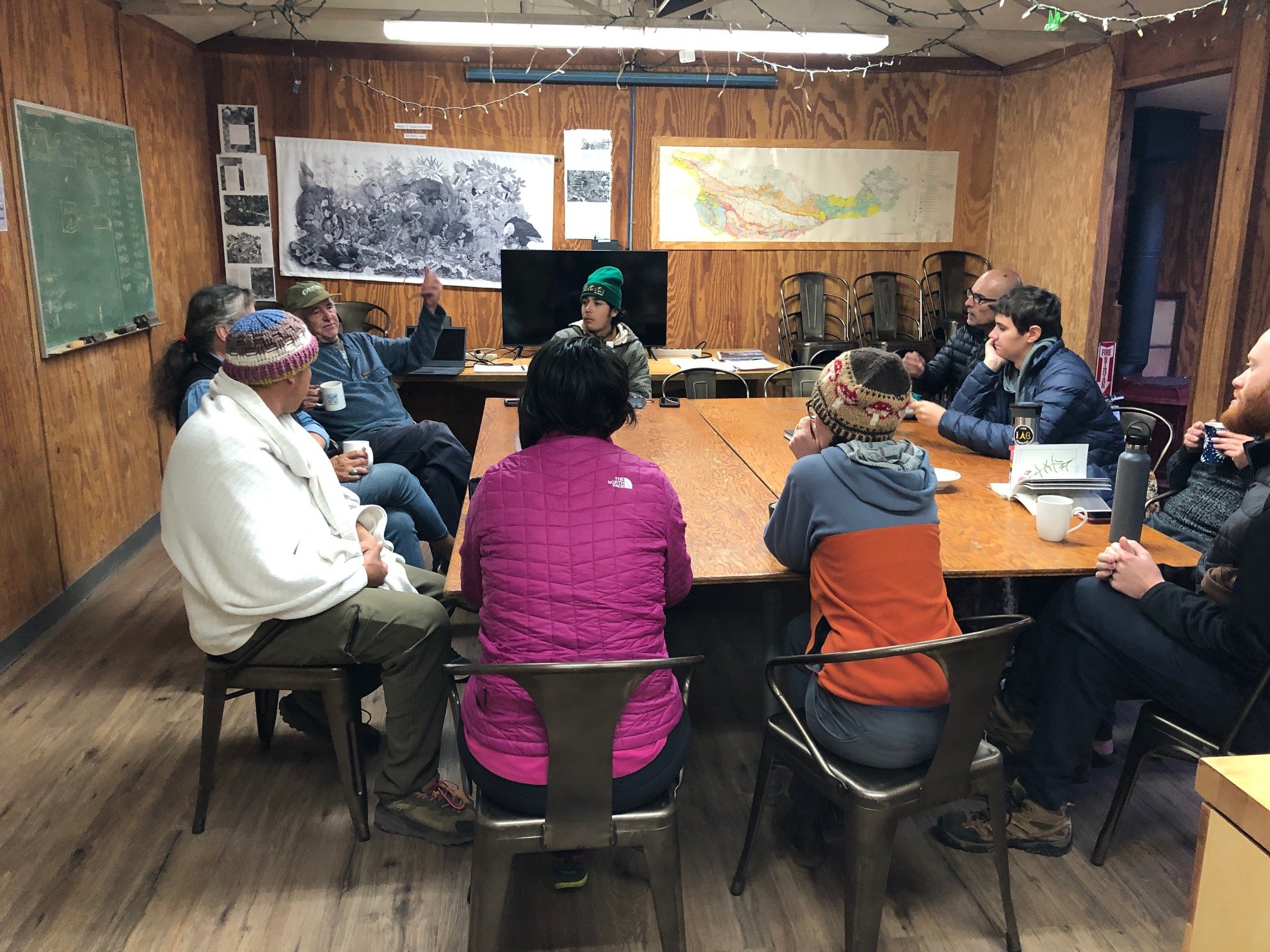

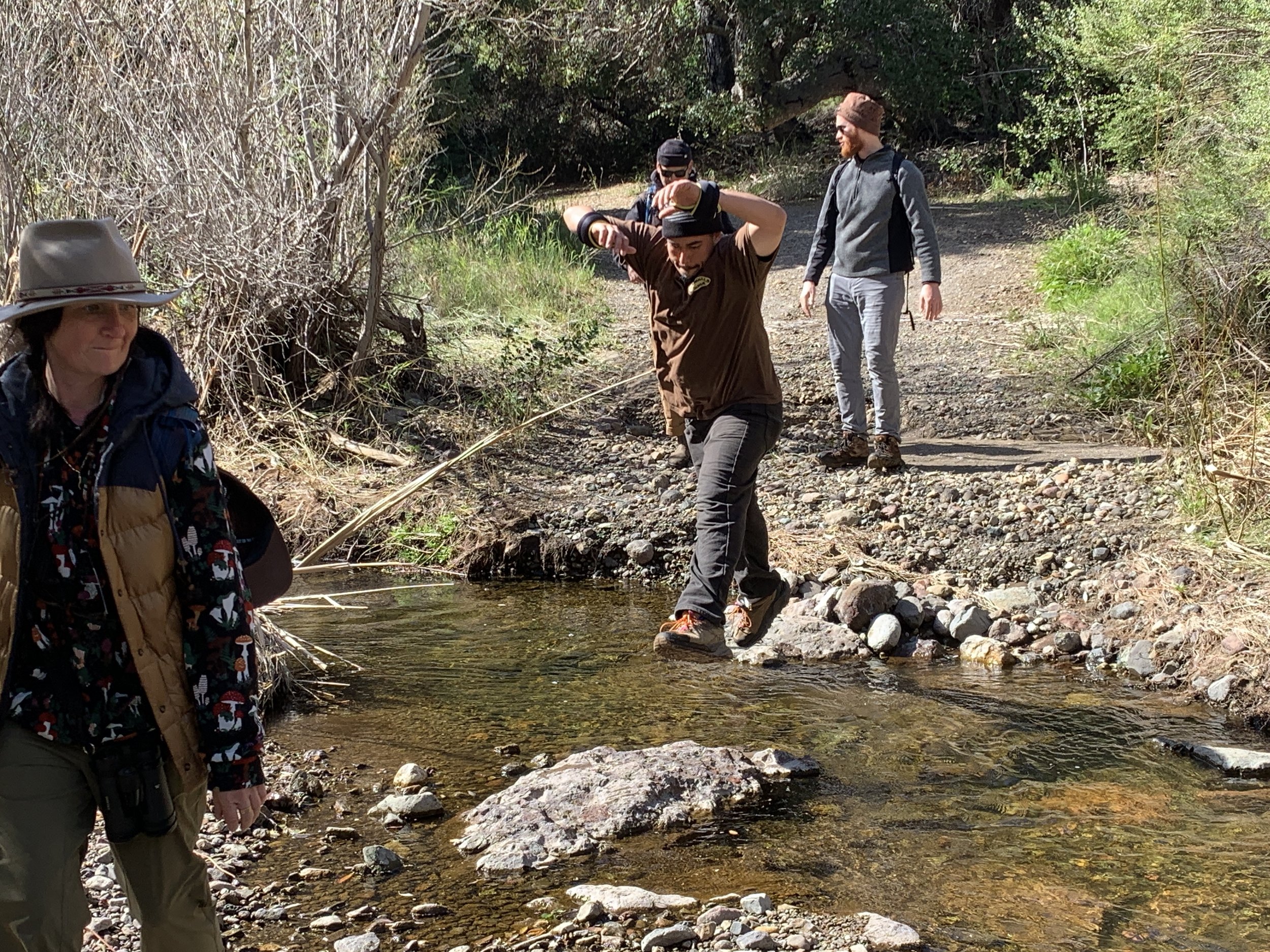

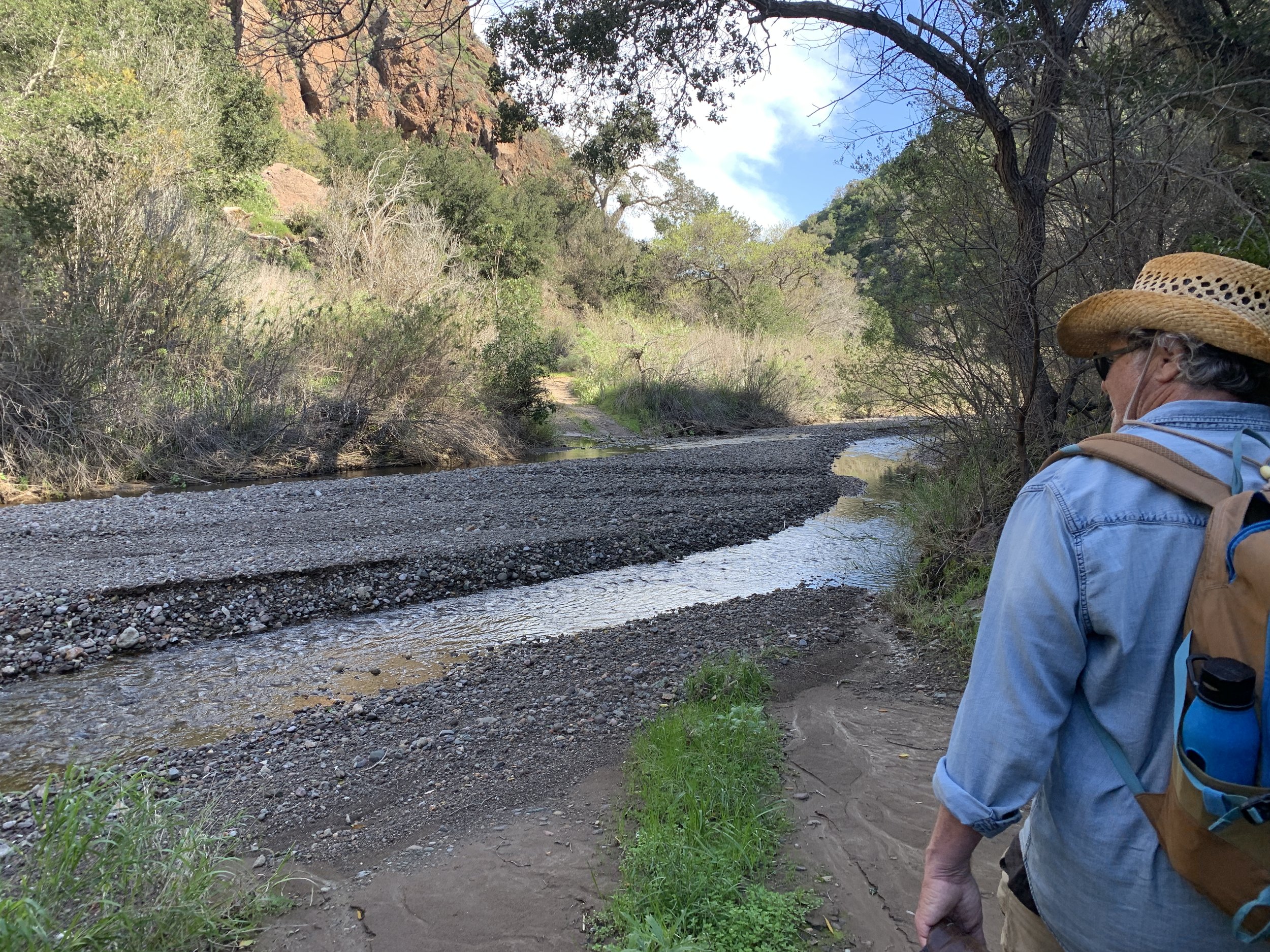
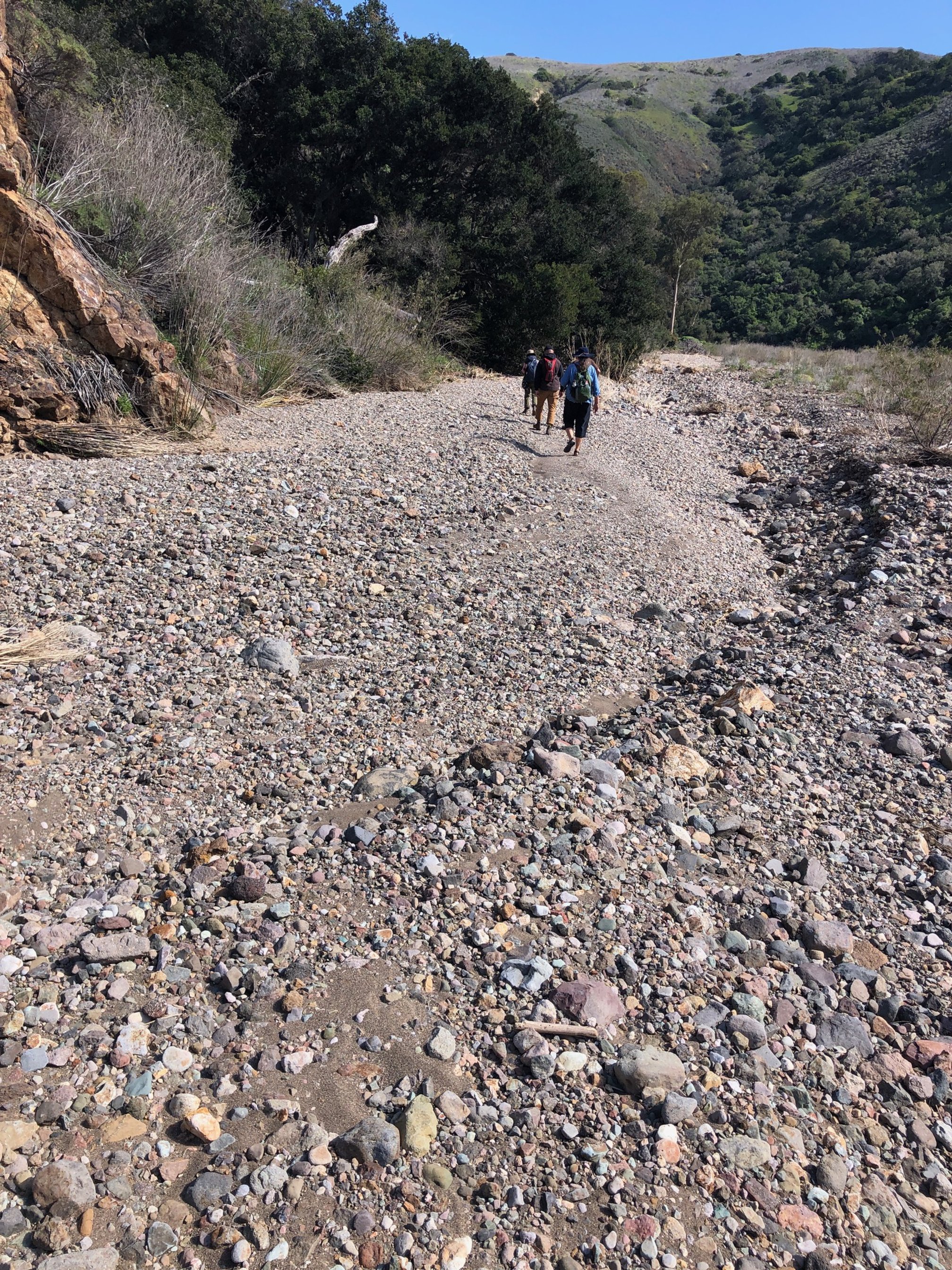
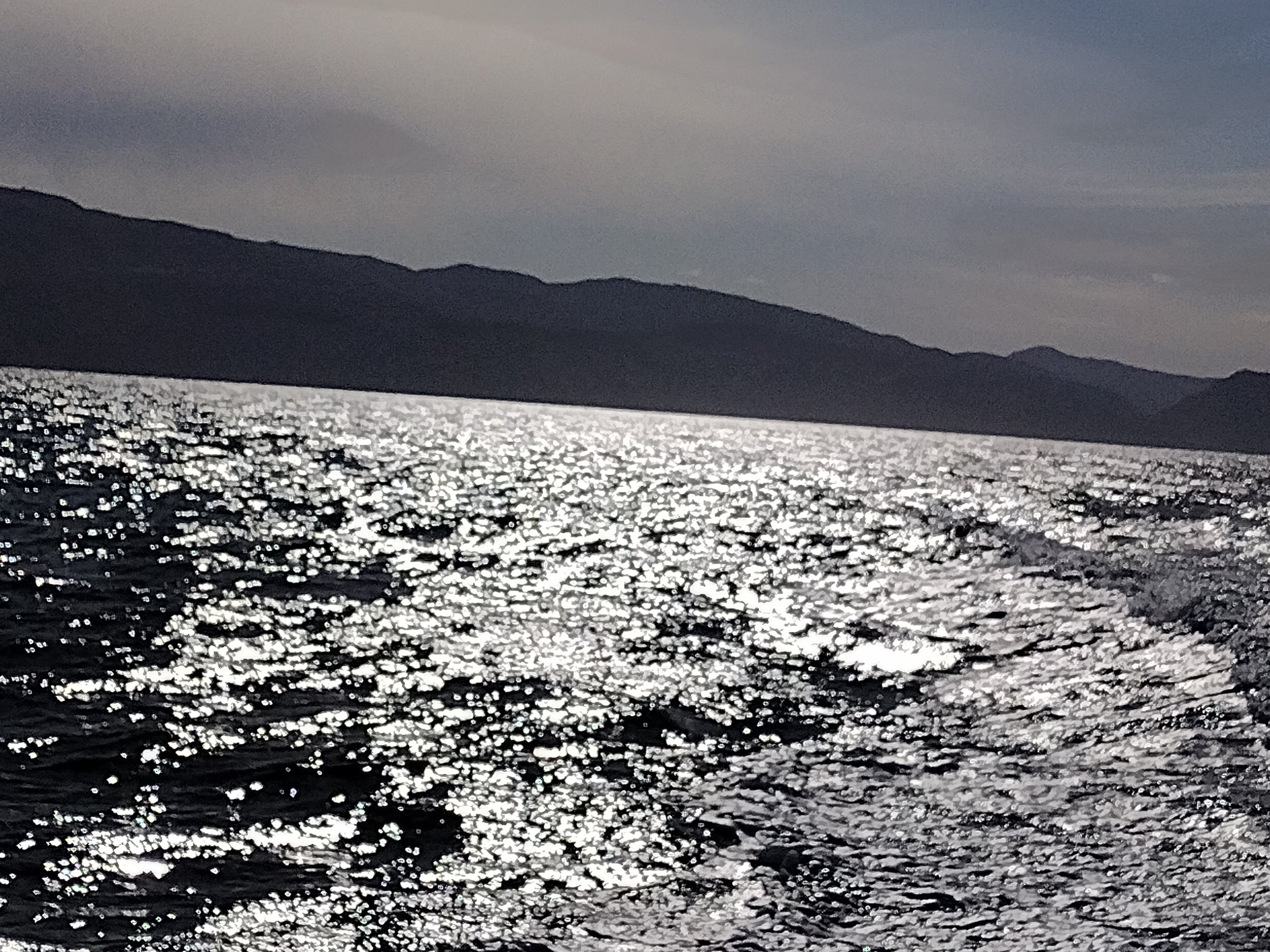
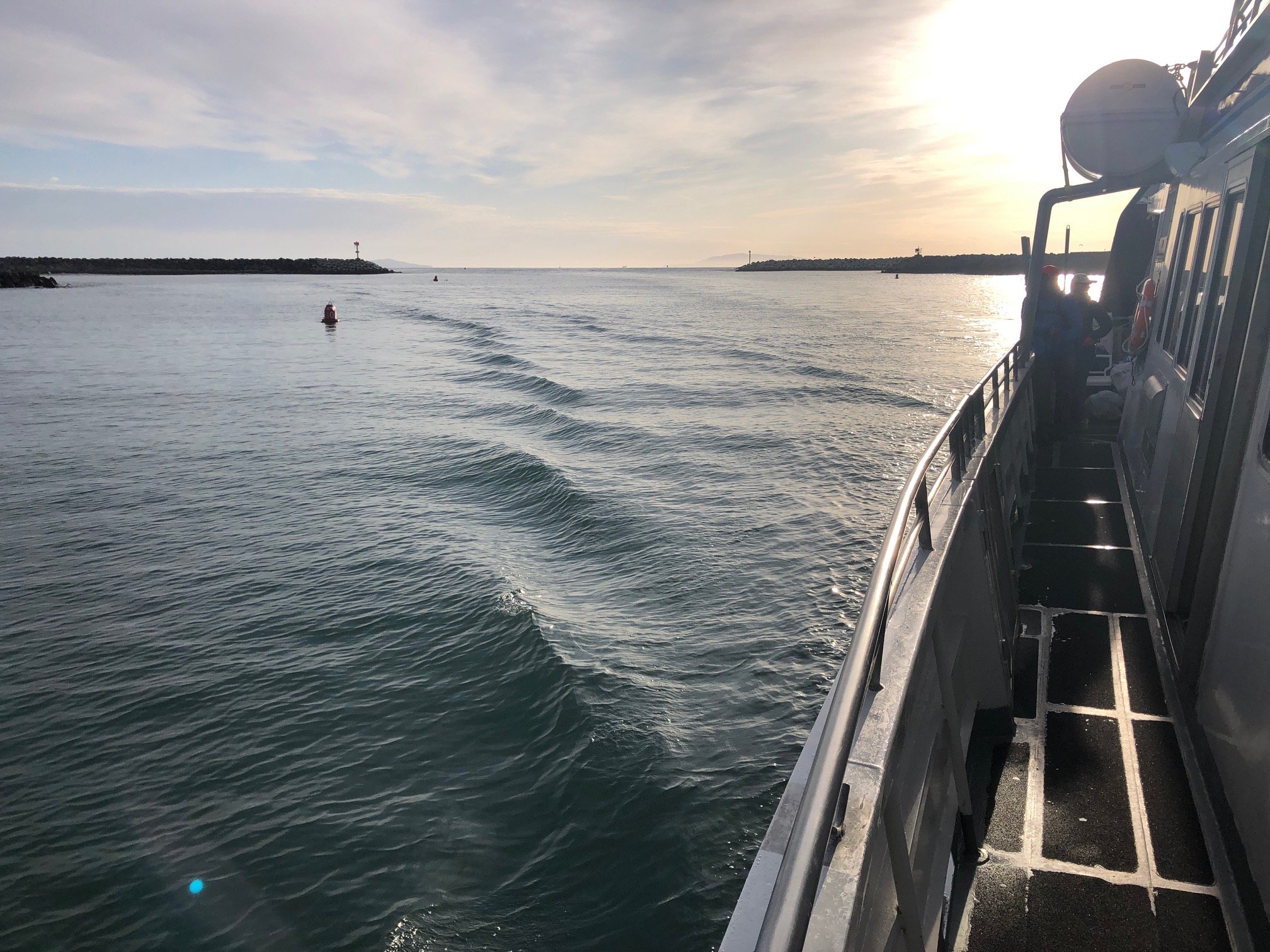
It still feels a bit strange to be back traveling with students – remnants of the Covid-isolation years, I guess. This year’s class of nine Santa Barbara City College restoration-ecology students were highly diverse in age and backgrounds as any past year, bringing valuable experiences and differing worldviews to the mix. Our annual student trip to Santa Cruz Island is such a great opportunity for Growing Solutions staff as teachers, ecologists (and chef!) to get to know the students, and dig into the concepts, techniques and realities of restoration ecology.
After an easy, near-flat channel crossing we landed at Prisoner’s Harbor and drove the long, steep Navy road to the UC Reserve field station. Due to the heavy winter rains this year the more direct Canada del Puerto road was washed out and impassible in a number of spots.
The next day the channel was so windy that no boats ran and we had the island to ourselves. Awesome! We enjoyed a beautiful sunny day of hiking searching out our stands of endemic Island Bush Mallow (Malacothamnus fasciculatus) plants, brought back from the edge of extinction and now thriving in multiple areas of the island. We enjoyed excellent meals prepared by Barlo, one of our founding board members and chef extraordinaire.
On the last day after packing up the truck, most of students opted to walk Canada del Puerto to see for themselves the condition of the canyon road or lack thereof. It was a pleasant and sometimes wet three-mile walk, crossing the creek multiple times. We learned a bit about hydrology and the power of water, noting downed trees, tons of rock and gravel that was carried with the flow of the past storms. And resilience. While the road was washed out, the oak trees were glistening and brilliant from the rain and every plant looked happy and ready to burst into amazing flowers.
“The sense of serenity that washed over me on the island felt instinctual,” wrote Steve, one of the students. “It felt incredible to exist in a place that is so close to how it is naturally supposed to be. Being with two of the heroes that have dedicated their lives to this and many more restoration projects was eye-opening as to what type of impact we can have on the world if we choose a path that feels right.“—Karen Flagg